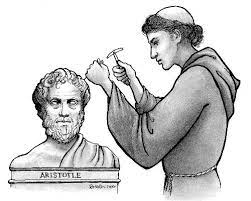Addiction and the Brain (Part 1)
ADDICTION AND THE BRAIN
Part One
Addiction: a word meaning ENSLAVEMENT
An addiction refers to a love relationship in which a person becomes so bonded to an object of desire that on their own they cannot stop their attachment. They become slaves to whatever object with which they have fallen in love – a slave to alcohol; a slave to heroin; a slave to gambling; a slave to pornography.
Two types of addiction: 1. Ingestibles (alcohol, drugs, food); 2. Behaviorals: gambling, sex, relationships, shopping, etc.
Addiction is a disorder of the brain in which anything pleasurable, exciting – anything that provides a rush – causes the brain to “fall in love” with the object of affection to the point of wanting to repeat the behavior over and over again, regardless of whatever dire consequences result.
“Addiction is a disorder of the brain no different from other mental illnesses.” Nora Volkov, M.D., Director of NIDA
In 1995, Dr. Volkov and her team of brain scientists at the Brookhaven Institute in New York made the breakthrough study that located the primary source of addiction: the dopamine neurochemical system in the brain.
Since then, a number of studies have replicated this discovery and further developed it to include at least 3 parts of the brain being actively involved in addictive behaviors, along with a genetic component.
It all begins when the addict performs a certain pleasurable action. Neurons in the reward pathway of the brain release a neurotransmitter called dopamine into the nucleus accumbens, the amygdala and the prefrontal cortex. After the dopamine is released, it fits into a specialized protein receptor on these other brain cells. The result: a rush of untold pleasure.
But that isn’t all. Three parts of the brain operate together: the pleasure/reward center of the brain (nucleus accumbens), the memory and learning center of the brain (amygdala), and the attention and the judgment/decision-making center of the brain. Pleasure + memory cues (triggers) + attention, judgment, and impulse control issues all combine to create addiction.
For many people, particularly those with a certain genetic makeup, this combination of brain disruption creates an experience of pleasure when doing a certain behavior that is so gratifying that the brain starts sending out signals of: “Do it again.”
The brain has fallen in love. It has been hijacked, enslaved to the point of causing severe disruption in the physical, social, moral, emotional, cognitive, familial and spiritual dimensions of a person’s life.
In recent years, further brain research has shown that addiction involves not just the neurotransmitter dopamine, but others like GABA and Glutamate. Together these create a condition in which cellular and molecular aberrations now have replaced the brain’s normal reward circuitry; this new “architecture of the brain” results in dependency – physical and emotional – to such an extent that whatever you just did, you’ll want to do it again – regardless of the consequences.
A Harvard brain scientist, John Ratey, M.D., calls the whole process: Reward Deficiency Syndrome. “The reward-deficient person, while he/she can enjoy the bounty of life to some extent, cannot enjoy life enough….People suffering from this syndrome find it nearly impossible to feel ‘full’ at any level…A felt emptiness is the hallmark of this syndrome….An important piece of the problem is a defect in the basic brain mechanism that allows us to feel pleasure.” (Shadow Syndromes, John Ratey, based on the research of geneticists, Kenneth Blume and David Comings, p. 320-21)
“It is easy enough to see how Reward Deficiency Syndrome would result in addiction: if the brain cannot feel satisfied…a relentless pursuit of the object of desire will result. This pursuit takes on a life of its own, as the sufferer becomes compelled to drink, eat, gamble, or shop, as the behavior slips out of his/her control and evolves into full-blown addiction.” (Ratey, p. 321)
What’s important to note here is that the medical world largely refused to believe that addiction was a brain disease for decades. The primary reason was the conviction that there was a paucity of sufficient scientific evidence to prove this contention on the part of addiction experts. Consequently, the medical world looked elsewhere for an underlying cause, like depression, as being the primary culprit. Their conviction was that “if we can just locate the mental health issue that lies underneath the drinking, gambling, pornography, etc., then we can adequately treat the problem.”
From the point of view of the public seeking help, this was a radically insufficient approach to effective treatment. But, a major breakthrough took place just two years ago when the American Society of Addiction Medicine (ASAM) completed an extremely exhaustive clinical study of this issue. Their three-fold conclusion was definitive: 1. Addiction is a brain disease; 2. Addiction is an independent disorder that is not caused by any other mental health condition; 3. Addiction involves not only alcohol and drugs, but food, sex, and gambling as well.
It would be difficult to adequately express how revolutionary this conclusion is in terms of the difference it will now make in the training of medical professionals, psychiatrists, psychologists, social workers, and others working in the field of mental health. The primary beneficiary will be the addicts themselves and their deeply affected families and friends.
The science is in. And the conclusion is: addiction is a chronic brain disease that has both genetic and environmental causes independent of a person’s willpower.
The bad news is: there is no cure for the disease of addiction; there is no single medication that will “fix” the problem.
The good news is: very successful recovery is available.
Recovery from addiction involves 3 stages. Each of these three stages emphasize that addiction is not only a brain disease, it also a soul disease.
What that means is that this disease is so powerful that it profoundly affects the very heart and soul of a human being. The effect of addiction is so comprehensive that it most often involves physical, emotional, spiritual, familial, economic, and, many times, legal ramifications. At the heart of recovery is the belief that the spiritual must be addressed or the other dimensions will never be effectively resolved.
The first stage of recovery is learning that it is a disease, that it is a treatable disease, and that it is not the addicts fault they have the disease, but every bit their responsibility to learn how to successfully take care of it. Through treatment centers and the power of 12 Step programs, people learn how to manage this disease on a daily basis – one day at a time.
The second stage of recovery is to learn that sobriety alone is not recovery. Just stopping the behavior is not enough. The ultimate goal is transformation. That is what the Twelve Steps are all about. In mental health language, this process is called “second order change.” What that means is a significant change in attitudes and behaviors must take place in order for full recovery to become a reality. It often also includes therapeutically treating any other mental health issues that not caused the disease, but have in many cases seriously enabled it – such as trauma, personality disorders, or clinical depression/anxiety.
The third stage of recovery is the development of an “attitude of gratitude.” The addict now embraces the disease as a means of helping them to move to a new level of existence.
Ted Wolgamot, Psy.D., CRADC, CSAT-S



